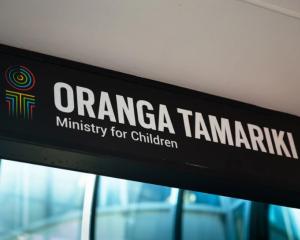New Zealand's unemployment rate fell to a five-year low in the June quarter as employment growth in Canterbury fuelled the labour market. The kiwi dollar fell after the figures were released.
The unemployment rate fell to 5.6 percent in the three months ended June 30, from a revised 5.9 percent in the March quarter, according to Statistics New Zealand's household labour force survey.
That's the lowest rate since March 2009, and below the 5.8 percent forecast in a Reuters survey of economists.
The participation rate fell 0.3 of a percentage point to 68.9 percent, below expectations, as the workforce remained static and the population grew.
Employment grew 0.4 percent in the quarter, below the 0.7 percent pace predicted by economists and was up 3.7 percent on an annual basis. A busy construction sector continued to drive jobs growth, particularly in Canterbury where the country's second-biggest city, Christchurch, is being rebuilt.
Canterbury's unemployment rate of 2.8 percent was the lowest across all regions, and employment growth was largely in construction and retail and accommodation service.
"Over the year, Canterbury contributed the most to national employment growth, accounting for almost half," Statistics NZ said in its report.
New Zealand employment confidence is at its highest since before the 2008 global financial crisis as the nation's economic growth spurs firms to take on more staff after a period of relatively high unemployment.
Construction jobs rose to 205,700 in the June quarter from 196,100 in March, public administration and safety positions rose to 132,700 from 119,300, and education and training employment rose to 201,100 from 190,400.
That offset a drop in agriculture, forestry and fishing jobs to 138,600 from 156,800, and a decline in retail trade and accommodation services dropped to 349,100 from 364,700.
The seasonally adjusted number of hours worked rose 0.3 percent to 78.5 million in the quarter for a 4.8 percent annual gain.
The kiwi fell as low as 84.27 US cents after the release from 84.53 cents immediately before.
The labour cost index, which measures wage inflation, rose at a quarterly pace of 0.5 percent across all sectors including overtime, and at an annual pace of 1.7 percent.
Private sector ordinary time wages rose 0.6 percent in the quarter and 1.8 percent in the year.
That was bolstered by the 50 cent increase in the minimum wage to $14.25 an hour from April 1, which Statistics NZ said resulted in a 17 percent rise in all private sector ordinary time wage compared to what would have been a 15 percent gain if the increase hadn't taken effect.
Unemployment in the Auckland region fell to 6.2 percent in the quarter from 7.3 percent in March, while Wellington's rate was down to 5.4 percent from 5.5 percent. Northland had the highest jobless rate at 8.3 percent.
The underemployment rate edged up to 4.2 percent of part-time workers willing and able to take on more hours from 4.1 percent in March.
The quarterly employment survey, also released today, showed ordinary time private sector wages rose 0.5 percent in the quarter to $26.29 per hour, for a 3.1 percent annual gain. Public sector ordinary time fell 1.6 percent to $35.28, for a 1.3 percent annual increase.
- BusinessDesk
Key Points
• The number of people employed increased by 10,000 people.
• The employment rate fell 0.1 percentage points, to 65.0 per cent.
• The number of people unemployed decreased by 9,000 people.
• The unemployment rate fell 0.3 percentage points to 5.6 per cent.
• The labour force participation rate decreased 0.3 percentage points, to 68.9 per cent.












